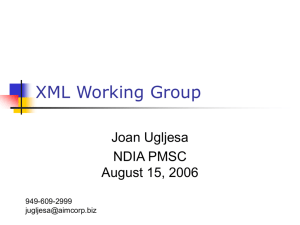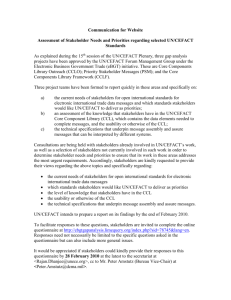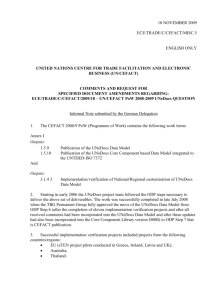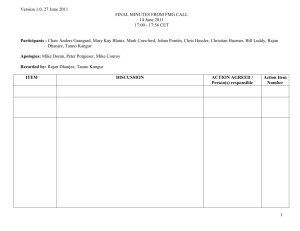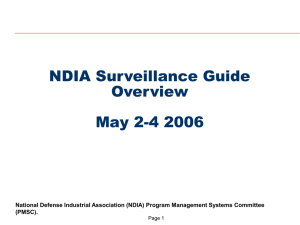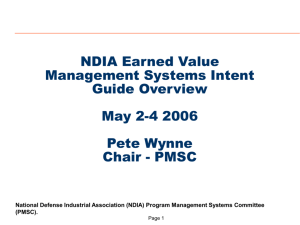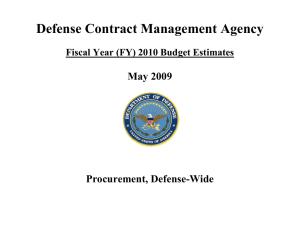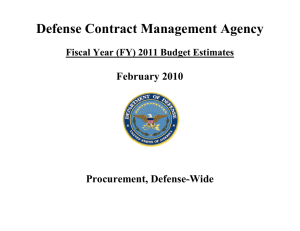Project Schedule and Cost Performance Management
advertisement
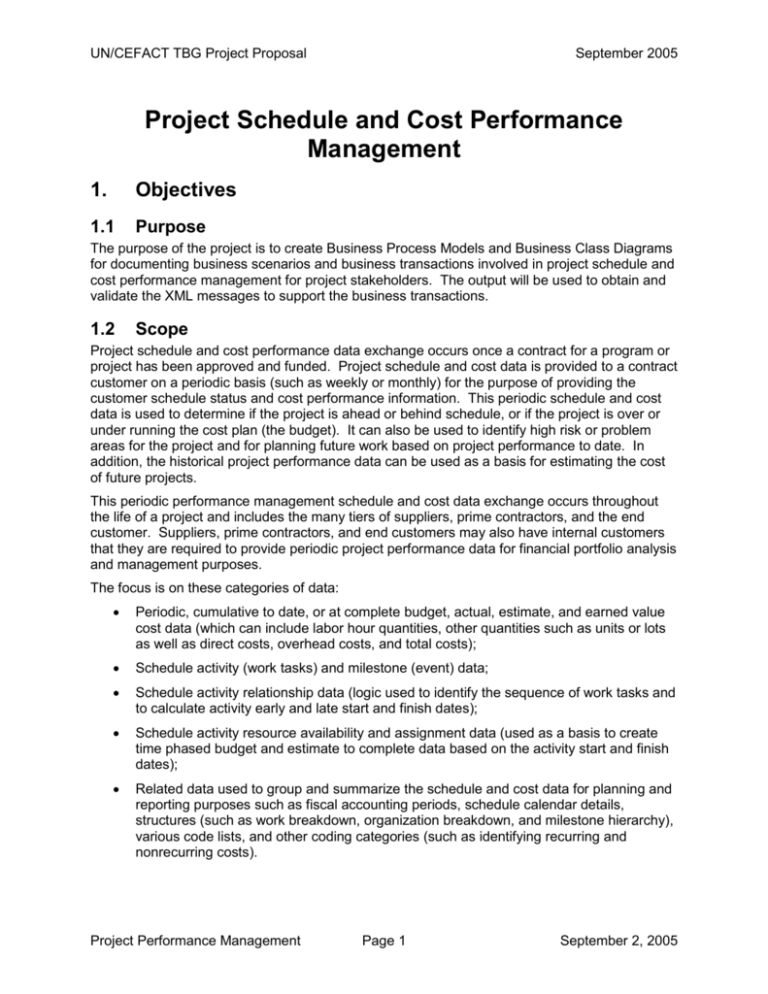
UN/CEFACT TBG Project Proposal September 2005 Project Schedule and Cost Performance Management 1. Objectives 1.1 Purpose The purpose of the project is to create Business Process Models and Business Class Diagrams for documenting business scenarios and business transactions involved in project schedule and cost performance management for project stakeholders. The output will be used to obtain and validate the XML messages to support the business transactions. 1.2 Scope Project schedule and cost performance data exchange occurs once a contract for a program or project has been approved and funded. Project schedule and cost data is provided to a contract customer on a periodic basis (such as weekly or monthly) for the purpose of providing the customer schedule status and cost performance information. This periodic schedule and cost data is used to determine if the project is ahead or behind schedule, or if the project is over or under running the cost plan (the budget). It can also be used to identify high risk or problem areas for the project and for planning future work based on project performance to date. In addition, the historical project performance data can be used as a basis for estimating the cost of future projects. This periodic performance management schedule and cost data exchange occurs throughout the life of a project and includes the many tiers of suppliers, prime contractors, and the end customer. Suppliers, prime contractors, and end customers may also have internal customers that they are required to provide periodic project performance data for financial portfolio analysis and management purposes. The focus is on these categories of data: Periodic, cumulative to date, or at complete budget, actual, estimate, and earned value cost data (which can include labor hour quantities, other quantities such as units or lots as well as direct costs, overhead costs, and total costs); Schedule activity (work tasks) and milestone (event) data; Schedule activity relationship data (logic used to identify the sequence of work tasks and to calculate activity early and late start and finish dates); Schedule activity resource availability and assignment data (used as a basis to create time phased budget and estimate to complete data based on the activity start and finish dates); Related data used to group and summarize the schedule and cost data for planning and reporting purposes such as fiscal accounting periods, schedule calendar details, structures (such as work breakdown, organization breakdown, and milestone hierarchy), various code lists, and other coding categories (such as identifying recurring and nonrecurring costs). Project Performance Management Page 1 September 2, 2005 UN/CEFACT TBG Project Proposal 2. September 2005 Deliverables The deliverables from this project will include: Business Requirements Specification (BRS) to describe project stakeholder business needs. Requirements Mapping Specification (RMS) to identify project stakeholder data requirements. The purpose for creating these documents is to provide the information and data the applicable working groups in CEFACT require to add any missing core components, to harmonize the data requirements, and to generate XML schemas. 3. Functional Expertise of Membership The project team is a group of experts with broad knowledge in earned value or performance measurement, project schedule and cost management as well ebXML/CEFACT XML standards development and requirements. The project team includes a cross section of representatives from industry, government, and ERP/project management software vendors. The project team also has ties with other industry associations such as the US Aerospace Industries Association (AIA) and National Defense Industrial Association (NDIA) to facilitate the content development, proof of concept, and implementation of the XML schemas. 4. Focus The focus of this data exchange is world wide across a number of industries including government functional entities (such as defense, energy, transportation, and social services), aerospace and defense, engineering and construction, oil and gas, utility (such as energy, telecom, and municipal services), scientific research and development, and information technology. 5. Initial Contributions The contributions submitted with this proposal include: Project Management Business Process Use Cases; Use cases as UML models; UML activity diagrams; Business Requirements Specification (BRS) outline. These initial contributions were developed by a US project team. Members of the team include the Defense Contract Management Agency (DCMA); Office of the Secretary of Defense, Program Analysis and Evaluation (OSD PA&E); Boeing; Applied Integration Management; and the National Defense Industrial Association (NDIA) Program Management Systems Committee (PMSC) XML Working Group. It is anticipated that a joint effort between DCMA and Boeing as well as selected subcontractors will be one of the first proof of concept implementations of the XML schemas. 6. Statement of Resource Requirements Required resources include project management/performance measurement subject matter experts as well as standards development expertise. Project Performance Management Page 2 September 2, 2005 UN/CEFACT TBG Project Proposal September 2005 Project Lead: Sylvia Webb, GEFEG Editor: Chris Hassler, DCMA Contributors: Joan Ugljesa, Applied Integration Management, NDIA PMSC XML Working Group Lead Tom Warner, Boeing Scott Larson, DCMA Ivan Pelly, Tecolote (representing OSD PA&E) EdiBuild France Japanese delegates Project Performance Management Page 3 September 2, 2005
